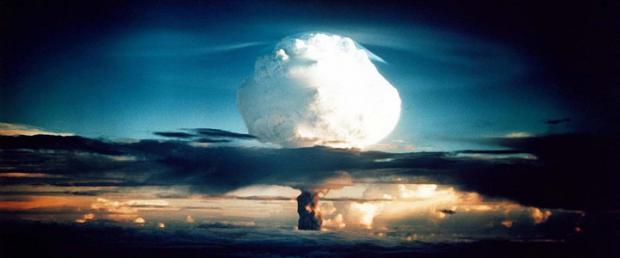
Breaking News
 IT'S OVER - I Have Proof: Fed Opened $24B Credit Line to 3 Banks (Jan 2nd Emergency Emails Leak
IT'S OVER - I Have Proof: Fed Opened $24B Credit Line to 3 Banks (Jan 2nd Emergency Emails Leak
 The Poo Doctor: This Gut Mistake Leads To Cancer. The Cheap Spice That Helps Repair...
The Poo Doctor: This Gut Mistake Leads To Cancer. The Cheap Spice That Helps Repair...
 Vaccine ingredients Exposed - Children's Health Defence "CHD"
Vaccine ingredients Exposed - Children's Health Defence "CHD"
Top Tech News
 Laser weapons go mobile on US Army small vehicles
Laser weapons go mobile on US Army small vehicles
 EngineAI T800: Born to Disrupt! #EngineAI #robotics #newtechnology #newproduct
EngineAI T800: Born to Disrupt! #EngineAI #robotics #newtechnology #newproduct
 This Silicon Anode Breakthrough Could Mark A Turning Point For EV Batteries [Update]
This Silicon Anode Breakthrough Could Mark A Turning Point For EV Batteries [Update]
 Travel gadget promises to dry and iron your clothes – totally hands-free
Travel gadget promises to dry and iron your clothes – totally hands-free
 Perfect Aircrete, Kitchen Ingredients.
Perfect Aircrete, Kitchen Ingredients.
 Futuristic pixel-raising display lets you feel what's onscreen
Futuristic pixel-raising display lets you feel what's onscreen
 Cutting-Edge Facility Generates Pure Water and Hydrogen Fuel from Seawater for Mere Pennies
Cutting-Edge Facility Generates Pure Water and Hydrogen Fuel from Seawater for Mere Pennies
 This tiny dev board is packed with features for ambitious makers
This tiny dev board is packed with features for ambitious makers
 Scientists Discover Gel to Regrow Tooth Enamel
Scientists Discover Gel to Regrow Tooth Enamel
 Vitamin C and Dandelion Root Killing Cancer Cells -- as Former CDC Director Calls for COVID-19...
Vitamin C and Dandelion Root Killing Cancer Cells -- as Former CDC Director Calls for COVID-19...
Will solar panels survive a nuclear EMP (and dear God, why do we have to think about this?)

While that particular bit of saber rattling seems to have come to an end, many people are understandably still worried that civilization might end soon. Some have opined that civilization hasn't felt very civilized lately, and maybe it might be time for it to either improve drastically or get the ending over with, already.
Whatever your take on our impending doom, fear of the indirect effects of a nuclear attack has led more than one of our readers to ask whether and how solar panels might survive. Good question!
The short answer is solar panels will probably get zapped by a nuclear EMP, because the wires they're connected to will cause extremely high voltages to backfeed into them. But there are ways to protect solar panels from an EMP, so don't lose all hope yet.
First, let's get some context and explanation out of the way:
The thing to be worried about here is what's known as a nuclear electromagnetic pulse, or EMP for short. If a nuclear weapon of sufficient size is detonated high in the atmosphere, an EMP can disrupt everything that uses electronic circuitry, potentially causing irreversible damage to electronics in cars, airplanes, the U.S. electric grid, and yes, your home solar system. Of course, if a nuke is detonated a little closer to the ground, the EMP will be the least of your worries.
How does an EMP work?
Basically, a nuclear EMP disrupts the earth's magnetic field to such a great degree that it causes electrons to go spiraling out all over the place, spontaneously zapping electronics in its path. There are three phases to a nuclear EMP: E1, E2, and E3.
E1 is the most damaging and fast-acting pulse, a huge burst of gamma radiation that saturates every meter of air within its considerable range with up to 50,000 volts of electricity within a few nanoseconds of the nuclear explosion.

 "Boots on the Ground"
"Boots on the Ground"


